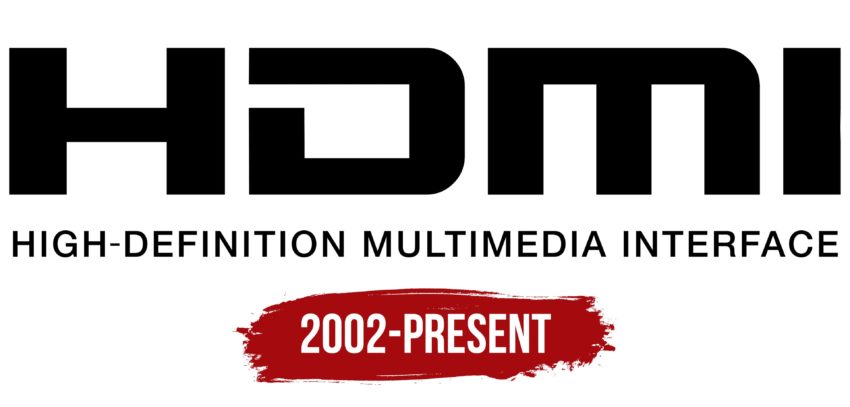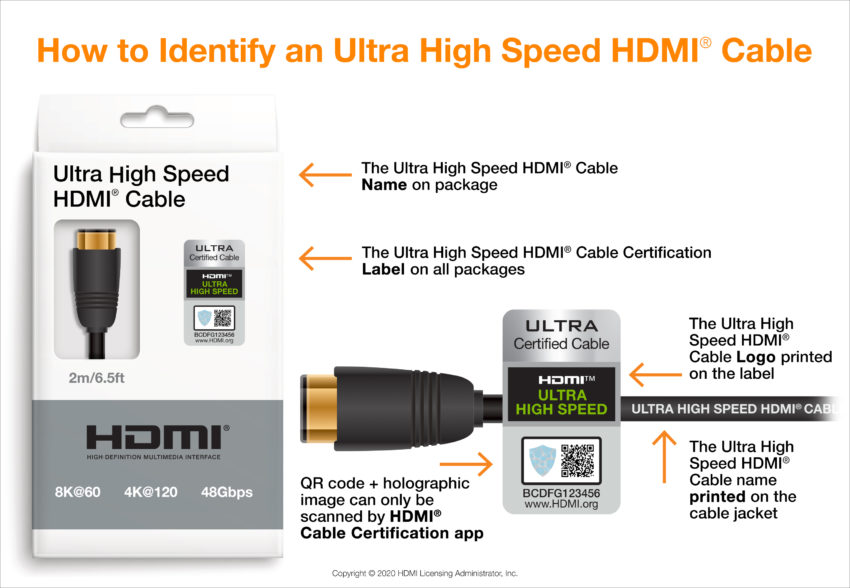Ultra High Speed HDMI Cable: Do You Need One?
As the audio enthusiast of my friend’s group, I am generally asked for opinions about what gear to purchase. So most of my advice centres around essential gear. My cable choice usually consists of me telling people to use what comes bundled with their devices. Up until recently, I would have told you that a cable is just a cable! Use whatever is cheapest. But then I purchased an OLED, and I realized that not all HDMI cables are created equal. So what did I do? I went out and replaced all of my HDMI cables with the least expensive ultra high-speed HDMI cables I could find! But do you need to do the same? The answer is most definitely a solid maybe!
A (super) Brief History of HDMI
HDMI, or High Definition Multimedia Interface, replaced the analog technologies that supported video and audio signals. Before HDMI, it was typical to use five cables (two audio and three component video) to get “higher fidelity” (480i) video and audio! HDMI solved all this by allowing up to 1080p video AND audio in a single cable! Each iteration of HDMI added more bandwidth and allowed for higher resolution video and audio to pass through the cable and support other associated technologies.

What does Ultra High-Speed Offer?
Ultra High Speed HDMI, or HDMI 2.1, is the culmination of all the previous versions of HDMI, plus several new features and higher bandwidth. Some features are:
- HDMI CEC (Consumer Electronics Control)
- Dynamic HDR (Dolby Vision / HDR10+ metadata)
- eARC (enhanced audio return channel)
- Dolby True HD / DTS Master Audio and other lossless formats via bitstream out
- VRR
- ALLM
- QMS (Quick Media Switching)
- 48Gbps allowing for 8k 60 or 4k 120
So, in a nutshell, Ultra High Speed HDMI allows your system to do several functions simultaneously. It can send and receive high-definition video and lossless audio while activating ALLM, dynamically tone map your image, and sending commands to your gear telling it to switch inputs or control volumes. But, do you need it?
Who Needs Ultra High Speed HDMI Cables
Are you a gamer looking to get the most out of your Xbox Series X/S or PS5 console? Do you have a 4k/120Hz (or 8k/60Hz) flat panel and want to run it at the highest resolution? The fact is that most people don’t really need these cables yet. Most of their gear can’t support the latest features so the cable will be unnecessary for them. But, eventually, we will all have 4k panels and more and more devices will support these higher-end features. You may not need an Ultra High Speed HDMI cable today, but you will eventually.

Check Your Gear
This is where my “solid maybe” comes into play. If you currently have all of your equipment hooked up and have no issues with video or audio dropouts and everything functions as it should, there is no need to upgrade. But if you can’t get the features to work correctly or have intermittent issues, that’s an indication you may need to upgrade. The other consideration is if you are getting into AV and you are purchasing new cables anyway. In this case, it’s worth spending a few extra dollars upfront to ensure you have the most up-to-date cables. Especially if you are putting them in a wall.
The biggest bottleneck is bandwidth. Your older HDMI cables, especially if they are Premium High Speed Certified, can do almost everything the newer Ultra High Speed HDMI cable can do. They just might not be able to carry all the bandwidth. This means you may need to lower your chroma subsampling or framerate in order to see an image. Not a problem for most of us. But if you are a gamer and want all the frames, you’ll need the newest HDMI cable.
Editor’s Note: What you may find as you slowly upgrade your gear is that everything will work fine for a while. You get a new flat panel? No problem. Buy a new receiver? Everything looks great. But then you get a new player or game console and start having issues. What has happened is that your equipment will default to the highest resolution or capabilities of your weakest device. Replace one thing? Well, everything else is still old so you don’t have a problem. But replace enough things and eventually, you will.
What To Look For When Shopping
If you go on Amazon, you will see many cables claiming they are “8k compatible.” Just remember that “compatible” is not the same as “certified.” There are no “8k certified” HDMI cables. These cable are compatible in that they can work at certain distances with lower bandwidth. But if you want full HDMI functionality, the HDMI group have set the standard to certify an HDMI cable as Ultra High Speed. Even better, all Ultra High Speed cables must carry a certification logo with a QR code. This ensures that your new cable will perform as expected and you can use all the features as advertised.
This means that price shouldn’t be an important factor here. Two cables of the same length with the Ultra High Speed certification will perform exactly the same. But the cheaper one. You do not need to spend extra on fancy connectors, braided jackets, or anything to make it “audiophile-grade.” Please save your money and spend it on something that makes a difference, like room treatments.

Wrap Up
So there you have it. Hopefully, you have a better understanding of what benefits Ultra High Speed HDMI cables offer in your setup. For many enthusiasts, myself included, our setups probably don’t need the inclusion of a new HDMI cable unless we are having issues. That said, if you are starting from scratch or need a new HDMI cable for new equipment, it makes sense to future-proof yourself and spend the extra couple of dollars to get that Ultra High-Speed cable.


